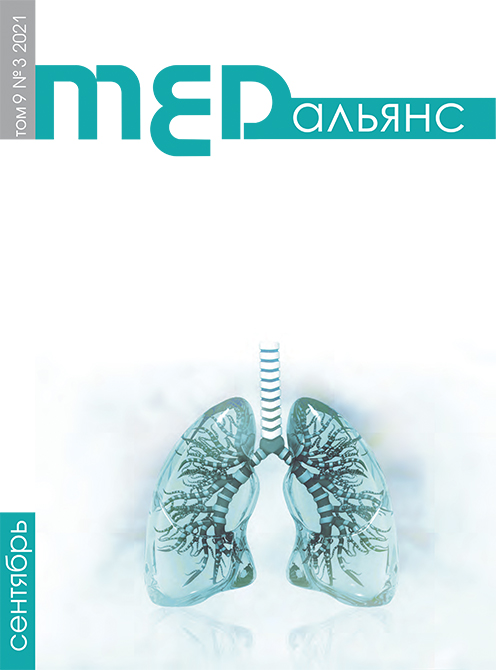Abstract
COVID-19 is a disease with manifestations ranging from asymptomatic to interstitial pneumonia associated with severe acute respiratory syndrome. The aim of the study isto assess the dynamics of the parameters of the pulmonary functional tests (PFTs), dyspnea, quality of life in the process of medical rehabilitation (MR) in the early recovery period after COVID-19. Materials and methods. An observational descriptive study was performed. 30 patients were examined, median age 46 years, males (90%). The median of computed tomography (CT) abnormalities in the acute period was 52.5%. Before MR most patients
had post-inflammatorychanges in the lungs. The medians of primary PFTs including spirometry, body plethysmography, diffusion test 15 days after discharge from hospital. The severity of dyspnea (mMRC) and qua lity of life (QoL, EQ-VAS) were also evaluated. Individual MR programs were designed taking into accountcase history, clinical picture, PFTs data. Results. Before MR, on average, all PFTs parameters were within the normal range, except for impaired lung diffusion capacity (83% of cases). 12 (40%) had restrictive, 3 (10%) — obstructive, and 1 — mixed type of ventilation disorders. The severity of dyspnea was
1–2, QoL was reduced. After MR, a statistically significant increase in SVC, FVC, FEV1, FEV1/SVC, МMEF25–75%, transfer factor CO (DLCO) and alveolar volume (VA) was revealed. The average increase in SVC, FVC, FEV1, DLCO and VA was 4.5% (150 ml), 6,4% (270 ml), 7% (323 ml), 5.5% (1.7 ml/ min/mmHg) and 5.8% (380 ml), respectively. There was also a statistically significant reduction in dyspnea, and an improvement in QoL. Conclusion. Improvement in lung function, reduction of dyspnea, improvement in QoL indicates the effectiveness of MR after COVID-19.

